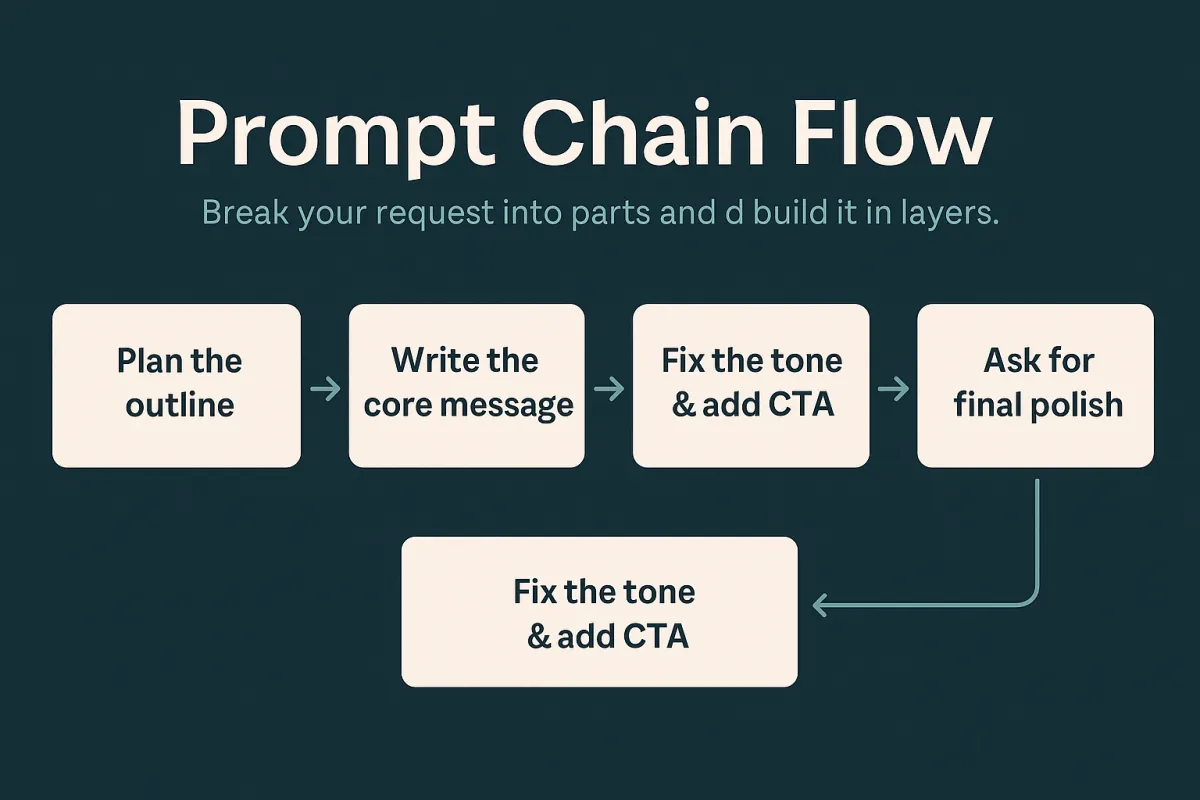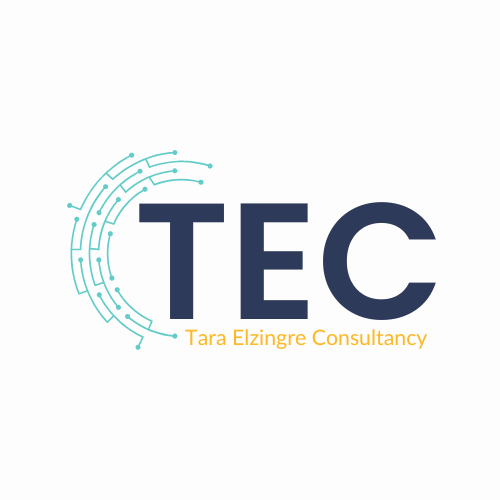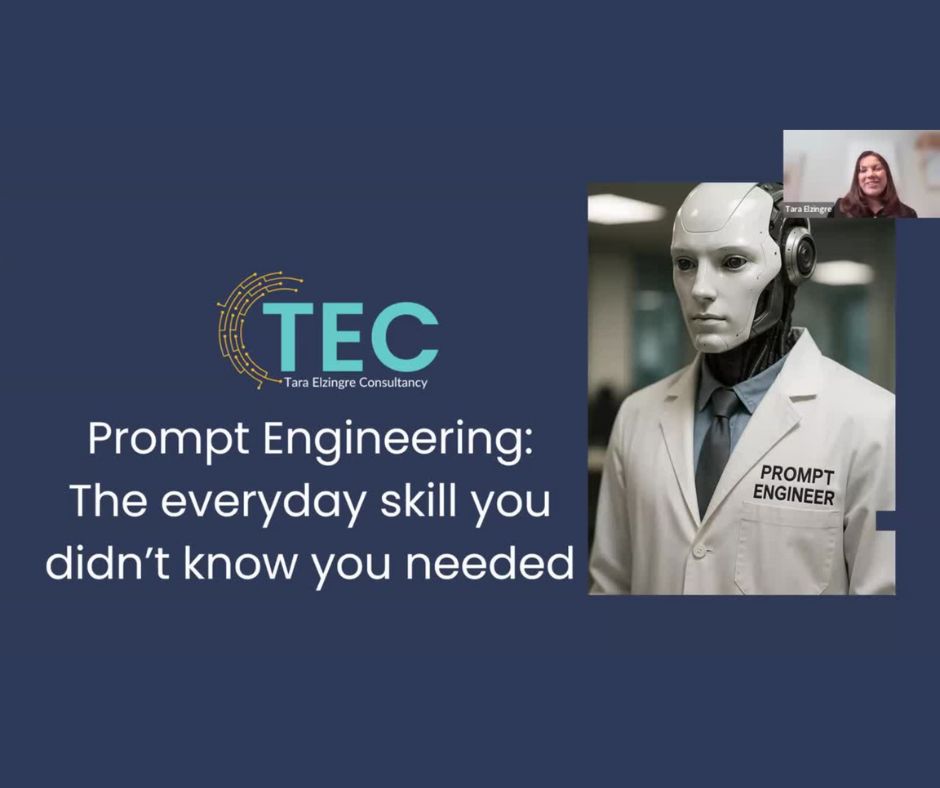Our Latest Articles

Mastering Prompt Engineering: A Guide from an AI & Digital Tool Trainer
Mastering Prompt Engineering: A Guide from an AI & Digital Tool Trainer
As a small business owner, navigating the world of artificial intelligence can feel overwhelming. However, with the right guidance, you can harness AI to boost your business productivity and creativity. I’m an AI & Digital Tool Trainer, and in this blog post I will break down prompt engineering in the simplest way possible. Whether you're completely new to AI or looking to sharpen your skills, this guide will give you practical steps you can implement immediately.
Prompt engineering is an essential skill when working with large language models (LLMs) like ChatGPT. It’s about communicating with AI on purpose, giving it clear and precise instructions so it can deliver the outputs you actually need. Let's cover three key areas to help you master prompt engineering: how to build effective prompts, understanding the balance between AI tools and human input, and how to use prompt chaining for better results.
Table of Contents
🔧 What Is Prompt Engineering and Why Does It Matter?
At its core, prompt engineering is simply communicating on purpose. AI, despite its name, isn’t truly “intelligent” in the human sense. It doesn’t understand emotions, ethics, or values. Instead, it recognises linguistic patterns and generates responses based on those patterns. Think of it like onboarding a new staff member: if you don’t provide clear instructions, context, and training, they won’t perform well. The same applies when you prompt AI.
One analogy I often use is that prompting is like toilet training a child. Kids might understand words, but it takes time for them to fully grasp what you mean and translate that into action. Similarly, AI needs clear, well-structured prompts to produce useful and relevant results. Poorly crafted prompts lead to generic or inaccurate outputs that won’t serve your business well.
Remember, AI doesn’t know what you don’t know. It can’t fill in gaps where your instructions are vague or incomplete. So your job as a business owner is to provide enough context and clarity to guide the AI effectively. This is especially important if you’re using AI-driven tools to generate content for your platforms—whether it’s marketing copy, customer service replies, or creative materials.
🛠️ How to Build a Prompt That Works
When you build a prompt, think of it as a mini brief for your AI assistant. Here are the seven elements I recommend including in every prompt to get the best results:
Goal: What is the specific output you want? Be clear about the end result, even if you’re not sure what it will look like exactly.
Format: Should the output be a list, paragraph, bullet points, or something else? The more specific, the better.
Audience: Who is this content for? Knowing your audience helps set tone and style.
Tone: How should it sound? Friendly, professional, cheeky, bold? This shapes the personality of the content.
Context: What background information does the AI need? Include relevant details or instructions to help it get it right.
Constraints: What limits should the AI observe? For example, word count, no offensive language, or no made-up facts.
Call to Action (CTA): If relevant, what action do you want your audience to take after reading or seeing the content?
For example, if you want to create Instagram captions for your business, a good prompt might look like this:
Write ten Instagram captions for my small eco-friendly skincare brand. The captions should be friendly and informative, aimed at young adults interested in sustainable beauty. Each caption should include a call to action encouraging followers to visit our website. Keep the tone light and engaging. Avoid technical jargon.
By including this much detail, you guide the AI to craft captions that fit your brand voice and marketing goals. If you simply say “write ten Instagram captions,” you might get generic or off-tone results that don’t resonate with your audience.
🔍 Tools vs You: Collaborating with AI Effectively
There are many AI tools available today, including ChatGPT, Gemini, Claude, and DeepSeek. Each has its own strengths and ways of interpreting prompts. Some even have built-in prompt-building guides to make your life easier. But no matter which tool you use, the key to success is collaboration.
Think of AI as an intern or new staff member. They have potential, but they need training, feedback, and clear instructions. If you don’t invest time in prompt engineering, you won’t get the quality output you need. The best results come from a partnership where you provide the context and the AI helps you execute quickly.
There are also helpful prompt-building tools like originality.ai and specialised prompt builders for ChatGPT that can refine your input by filling in gaps or suggesting improvements. These tools use pattern recognition to enhance your prompts, but they still rely on your business knowledge to make the output truly bespoke.
For example, if you have a prompt you’ve used before and want to improve it, you can input it into one of these tools to see how it might be rephrased or enriched. This can save time and help you learn what elements your prompts might be missing.
However, remember that AI tools reflect biases present in their training data. They don’t recognise these biases themselves, so it’s your responsibility to review outputs carefully and adjust prompts to ensure they align with your brand values and audience needs.
🔗 Prompt Chaining: Breaking Down Complex Tasks
Sometimes, you might want AI to help with a large or complex task, such as writing a detailed blog, creating a marketing campaign, or even drafting an entire book. Trying to cram all instructions into one long prompt usually doesn’t work well because AI has limits on how much it can process at once.
This is where prompt chaining comes in, a technique where you break down your task into smaller, manageable steps or “chains.” You feed the AI information step-by-step, building on previous outputs, refining with feedback, and layering instructions.
For instance, if you’re writing a book, you wouldn’t ask the AI to write the entire manuscript in one go. Instead, you might:
Start by outlining the book’s structure and chapters.
Work on each chapter individually, specifying tone, audience, and style.
Generate drafts for each section and review them.
Give feedback to improve clarity, tone, and accuracy.
Combine all sections into a final draft and polish.
This approach allows you to maintain control and quality, ensuring the AI’s output aligns with your vision and business standards. It’s similar to managing a team project with multiple milestones rather than expecting a perfect final product immediately.
📝 The Importance of the Human in the Loop
AI can be incredibly powerful, but it’s not a magic wand. The most successful users are those who stay actively involved in the process. You are the ultimate decision-maker who ensures the content is accurate, aligned with your brand, and ready for your audience.
Here are some tips for keeping the “human in the loop”:
Review all AI-generated content carefully before publishing or sharing.
Provide specific feedback to the AI or adjust your prompts based on what you learn.
Use examples of your preferred style or tone to help guide the AI.
Train your AI tools by sharing brand guidelines, business plans, or previous successful content.
Don’t rely solely on AI for sensitive or complex communications that require human empathy or ethical judgment.
Think of AI as a collaborative partner that can speed up your workflow and spark creativity, but it needs your expertise and oversight to truly shine.
💡 Common Challenges and How to Overcome Them
One common question I get is: “What should I do if my LLM misunderstands my prompt?” Here’s my advice:
Rephrase your prompt: Sometimes a slight change in wording can make a big difference. Look back at the context you provided and consider if it could be clearer or more detailed.
Use the seven elements: Double-check that your prompt includes goal, format, audience, tone, context, constraints, and call to action. Missing any of these can cause confusion.
Use prompt-building tools: Put your original prompt into a prompt enhancement tool to see how it might be improved.
Ask the AI for feedback: You can ask the AI directly, “What did you misunderstand here?” or “What additional information do you need to get this right?” This can help you identify gaps.
These steps help you refine your prompts and build a more effective dialogue with your AI assistant over time.
📅 Further Learning and Upcoming Workshops
If you want to dive deeper into prompt engineering and AI for business, I’m hosting a series of interactive workshops. These sessions offer customised guidance, practical exercises, and systems you can implement immediately. The workshops are three hours long and provide you with tailored GPT models and content-building strategies.
The next workshop will be on 25th July, but you can find all my workshops on Eventbrite or reach out to me directly for more information.
🤔 FAQs About Prompt Engineering for Small Business Owners
What exactly is prompt engineering?
Prompt engineering is the art and science of crafting clear, specific instructions for AI tools to generate useful and relevant outputs. It’s about communicating with AI on purpose, not just typing random commands.
Why is prompt clarity so important?
AI doesn’t understand meaning or emotions; it predicts patterns based on your input. If your prompt is vague or incomplete, the AI's output will be generic or off-target. Clear prompts help AI deliver exactly what you need.
Can I use AI if I don’t have a tech background?
Absolutely! That’s where an AI & Digital Tool Trainer like me comes in. I specialise in helping people without technical expertise use AI effectively for everyday business tasks.
What if the AI makes things up or “hallucinates”?
This is a known feature of generative AI. Sometimes it fabricates information to fill gaps. You can reduce this by adding constraints in your prompt, such as “do not make up facts” or “stick to verified information.” Always review outputs carefully.
How can I make AI outputs sound more like my brand?
Include your brand’s tone and style in the prompt. Provide examples of content you like, and train your AI tools over time by sharing your business plans and brand guides.
What is prompt chaining?
Prompt chaining is breaking a complex task into smaller steps, giving instructions in stages, and refining outputs progressively. This helps manage AI’s processing limits and improves quality.
How do I handle AI bias?
AI reflects biases in its training data. You need to be aware of this and adjust your prompts accordingly to ensure inclusivity and fairness in your content.
🚀 Final Thoughts: Empower Your Business with AI
Prompt engineering is a skill that every small business owner can learn to unlock the true potential of AI. By communicating clearly, collaborating with AI tools, and staying actively involved in the process, you can save time, enhance creativity, and produce content that truly resonates with your audience.
Remember, AI is a powerful assistant but not a replacement for your expertise and judgement. Keep the human in the loop, be patient as you refine your prompts, and build your own library of prompt templates tailored to your business.
If you want to take your AI journey further, consider joining one of my workshops where we’ll work together hands-on to create customised GPTs and build systems that fit your unique needs.
Let's make success together with AI-powered business growth!
Free Webinars!
Join us every Wednesday at 1pm for a fast, focused digital skill-up session.
Want to shift from reactive hustle to proactive growth? Through personalised strategy, targeted Ai integration, and custom-built automations, TEC equips you to run a business that doesn't rely on your constant presence. It's not about adding more to your plate-it's about building systems that align with how you actually work. Begin today-your best business awaits
CUSTOMER CARE
Terms of Service
Privacy Policy
Contact Us

